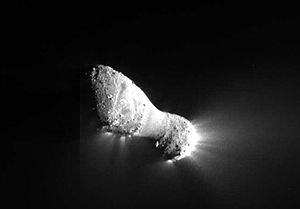October-November, 2010
Comet Hartley 2,103P is a small periodic comet with an orbital period of 6.46 years.
It was discovered by Malcolm Hartley in 1986 at the Schmidt Telescope Unit, Siding Spring Observatory, Australia. Its diameter is estimated to be 1.2 to 1.6 kilometres (0.75 to 0.99 mi).
Hartley 2 was the target of a flyby of the Deep Impact spacecraft, as part of the EPOXI mission, on 4 November 2010, which was able to approach within 700 kilometers (430 mi) of Hartley 2 as part of its extended mission.
As of November 2010 Hartley 2 is the smallest comet which has been visited. It is the fifth comet visited by spacecraft, and the second comet visited by the Deep Impact spacecraft, which first visited comet Tempel 1 on 4 July 2005.
2010 Earth approach
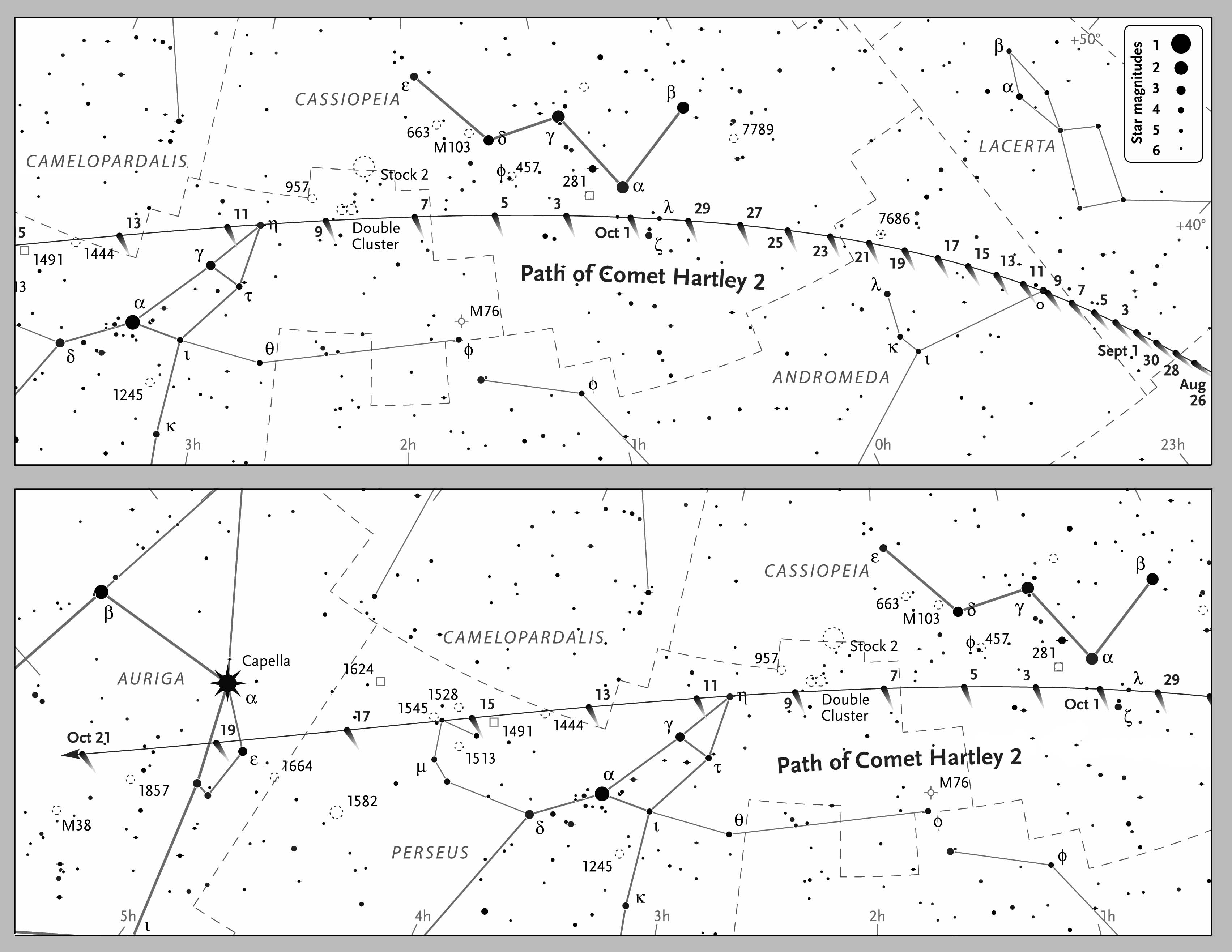
The comet passed within 0.12 AU (18,000,000 km; 11,000,000 mi) of Earth on 20 October 2010, only eight days before coming to perihelion (closest approach to the Sun) on 28 October 2010. From northern latitudes, during early November 2010, the comet was visible around midnight without interference from the Moon.
Despite its current close passage by Earth's orbit, the comet is not yet a known source of meteor showers. However, that could change. Dust trails from the recent returns of 103P/Hartley 2 move in and out of Earth's orbit, and the 1979-dust trail is expected to hit in 2062 and 2068
October 2nd, 2010
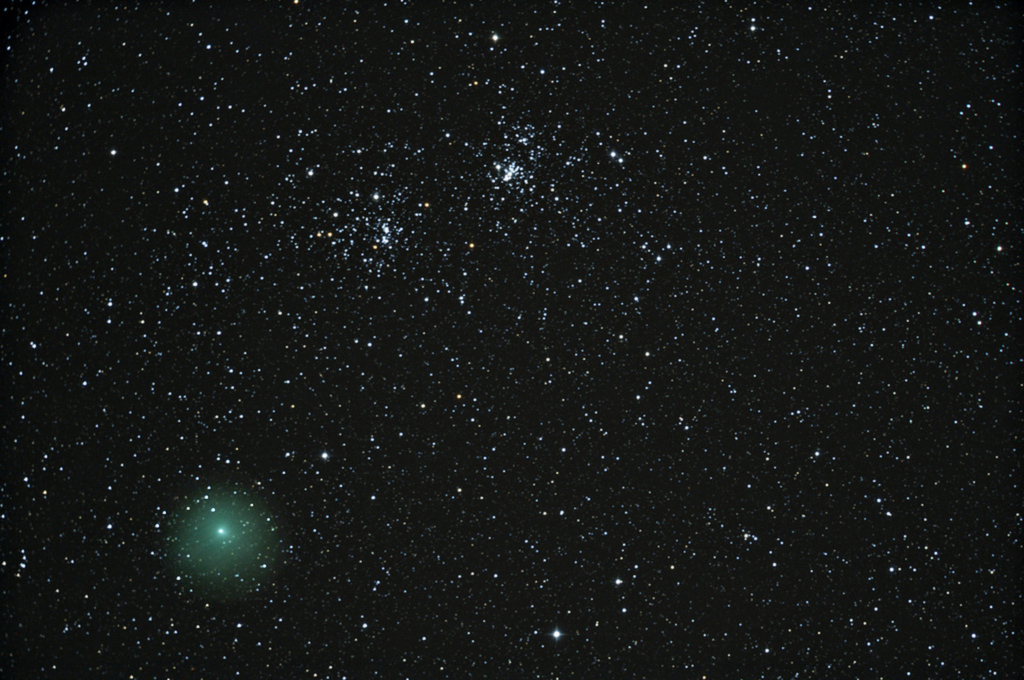
My first image of Comet Hartley 2 shot October 2nd, 2020
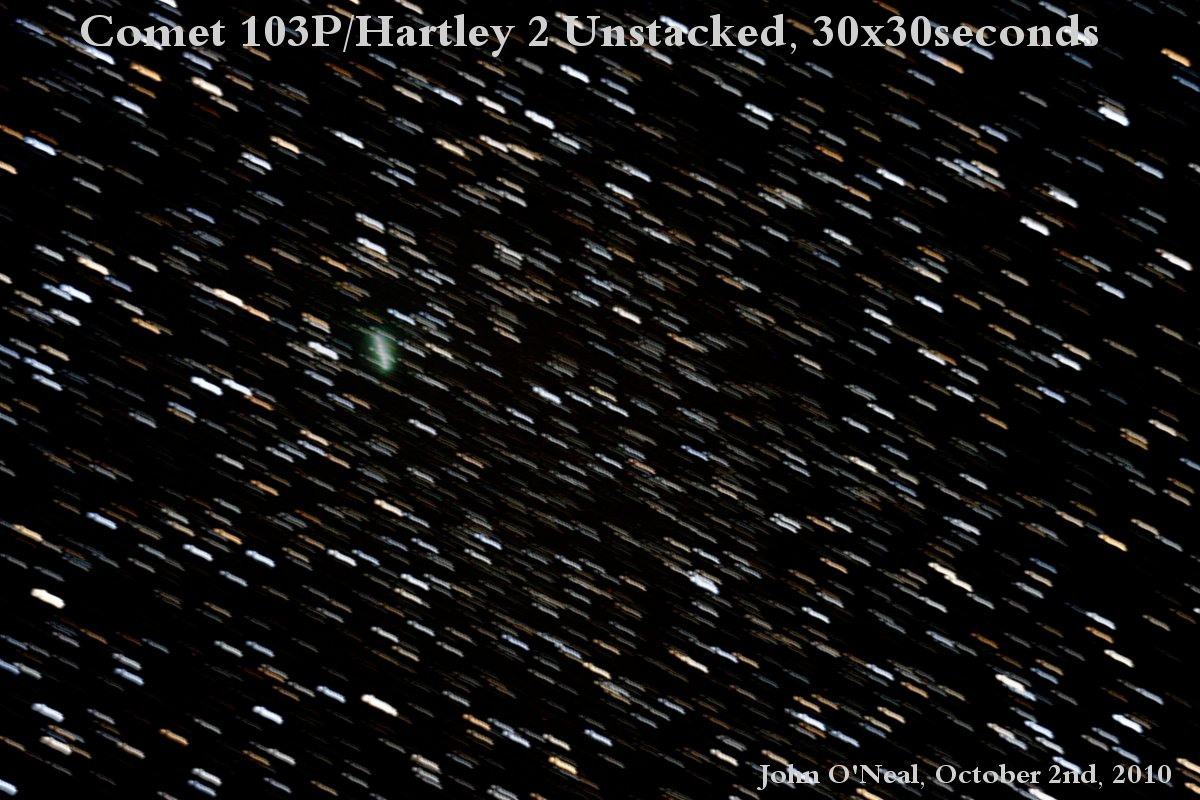
Comet 103P/Hartley 2 - 3x30 Unstacked shot October 2nd, 2020
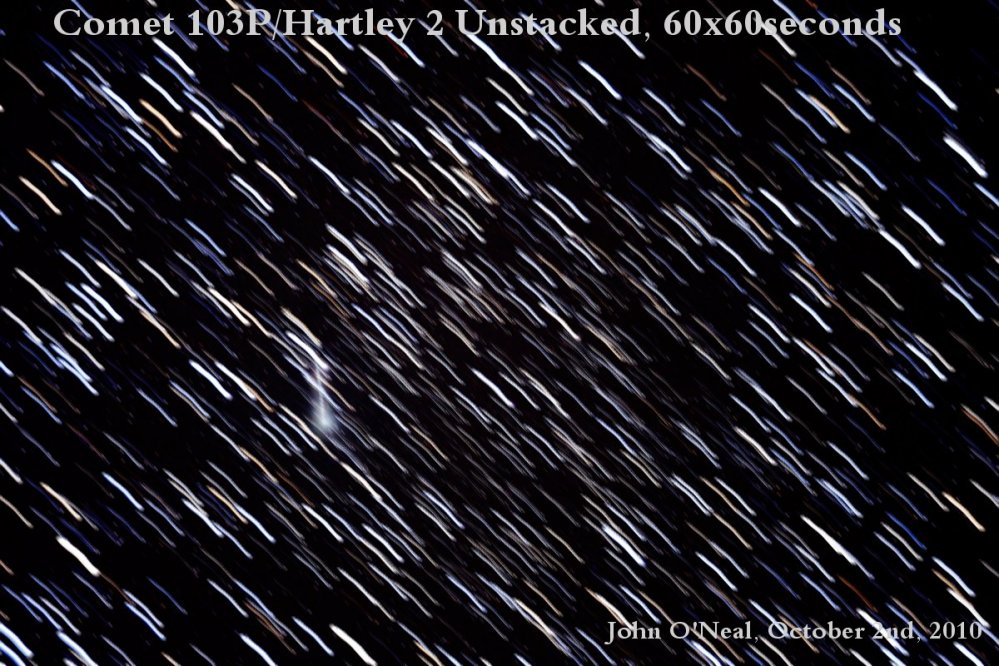
Comet 103P/Hartley 2 - 60x60 Unstacked shot October 2nd, 2020
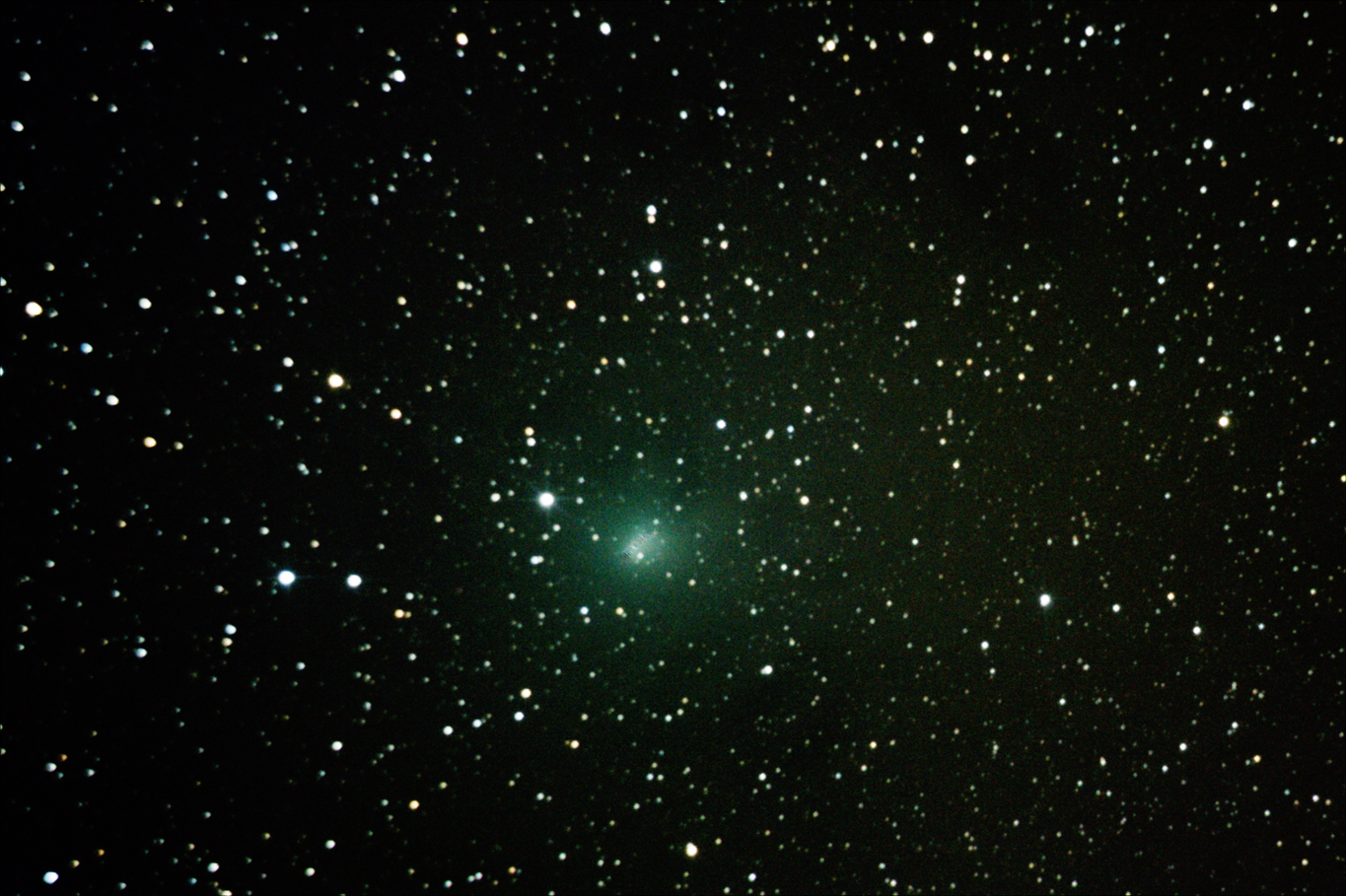
Comet 103P/Hartley 2 -60 x 60 seconds stacked, shot October 2nd, 2020
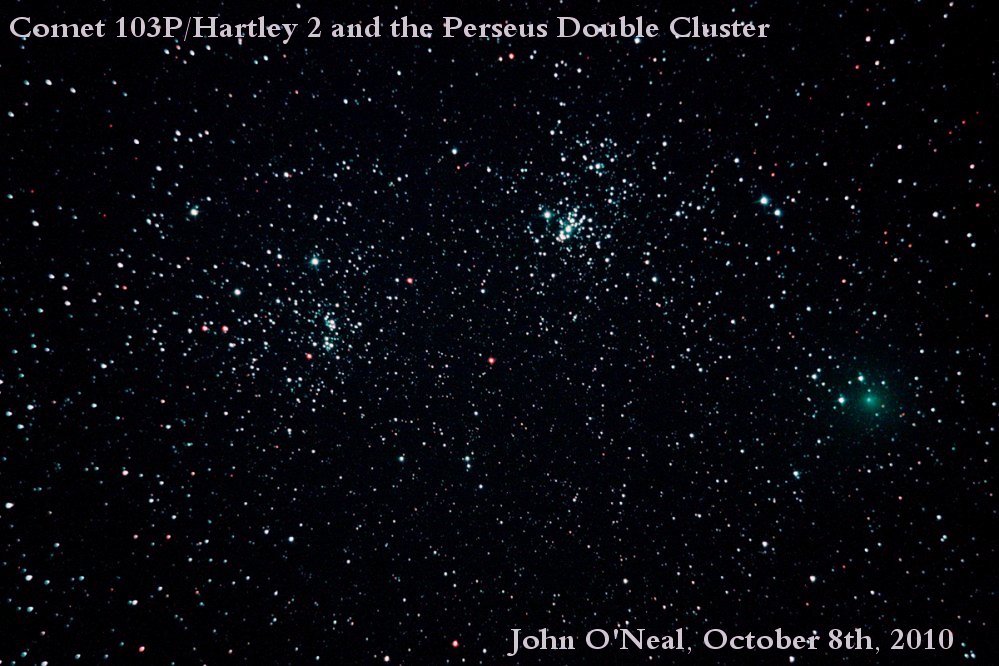
October 8th, 2010
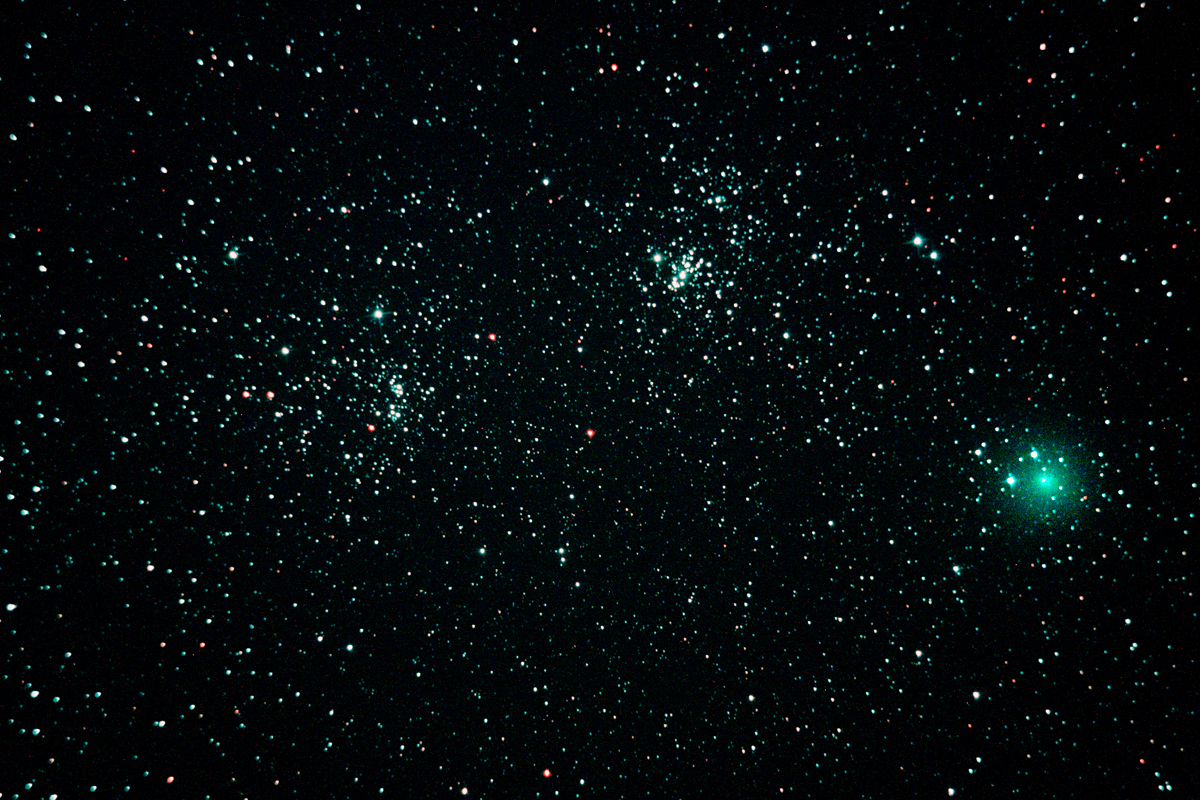
Comet 103P/Hartley 2 passing by the Perseus Double Cluster shot October 8th, 2010
- ANIMATION - Comet 103P/Hartley 2 passing by the Perseus Double Cluster October 8th, 2010
October 11th, 2010
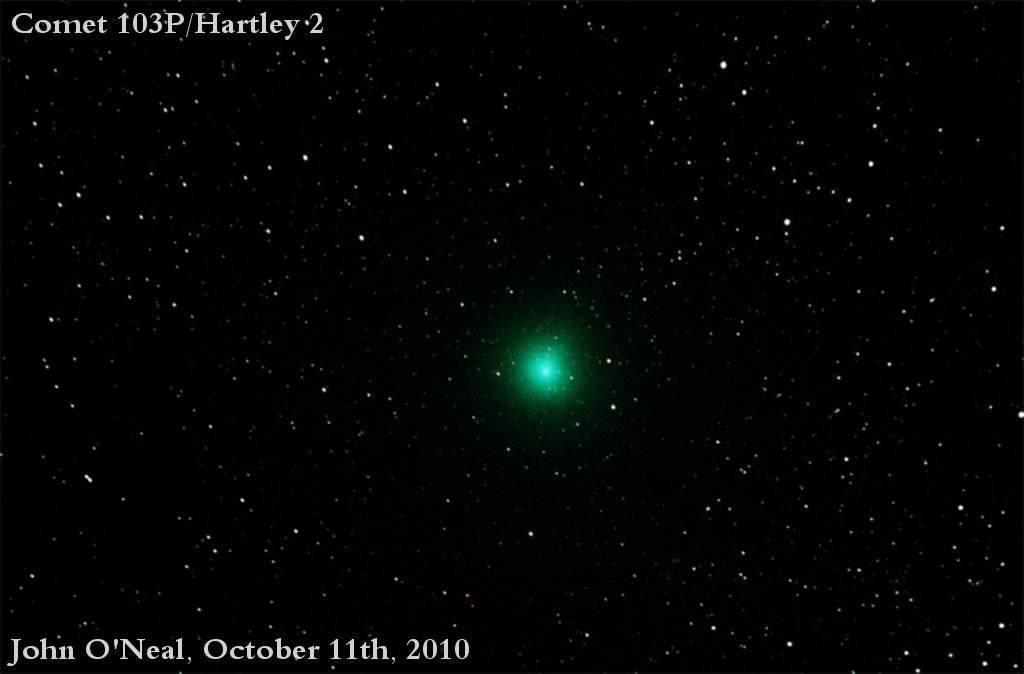
Comet 103P/Hartley 2 shot October 11th, 2010
October 12th, 2010
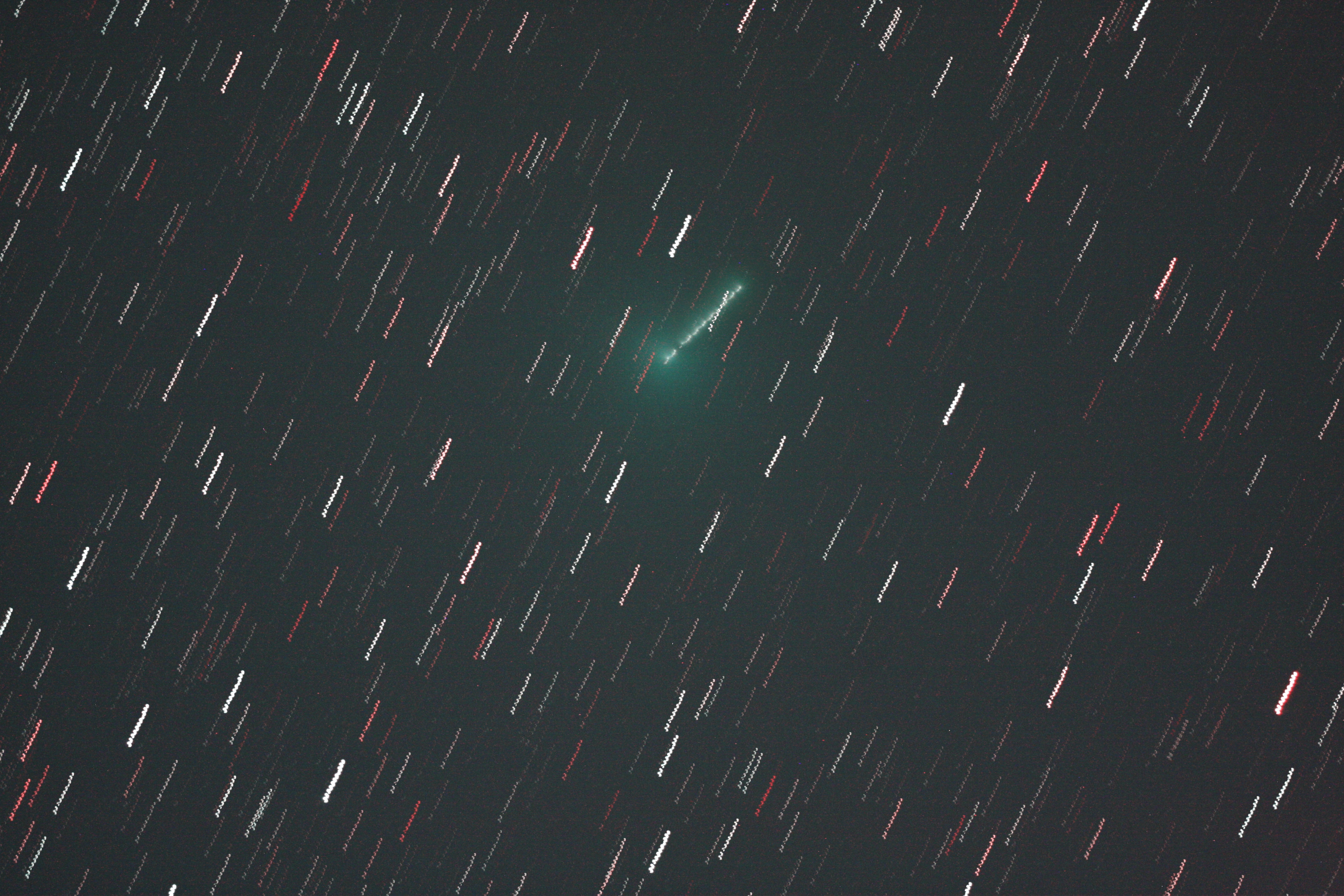
Comet 103P/Hartley 2 shot October 12th, 2010 Unstacked
October 13th, 2010
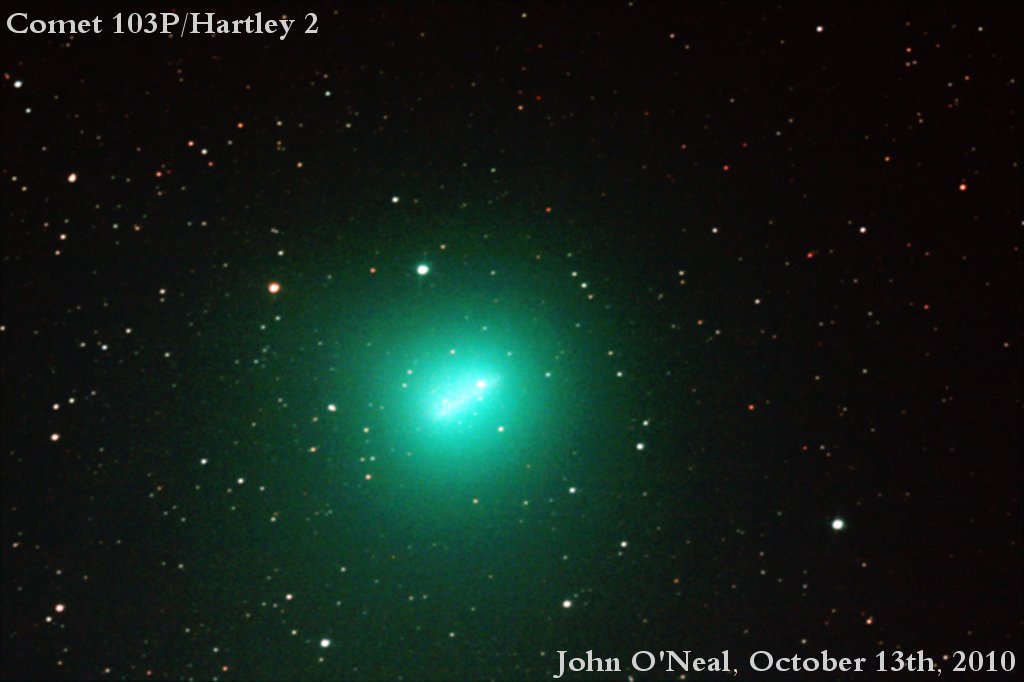
Comet 103P/Hartley 2

Comet 103P, Hartley 2 passing by the Perseus Double Cluster Video
October 15th, 2010
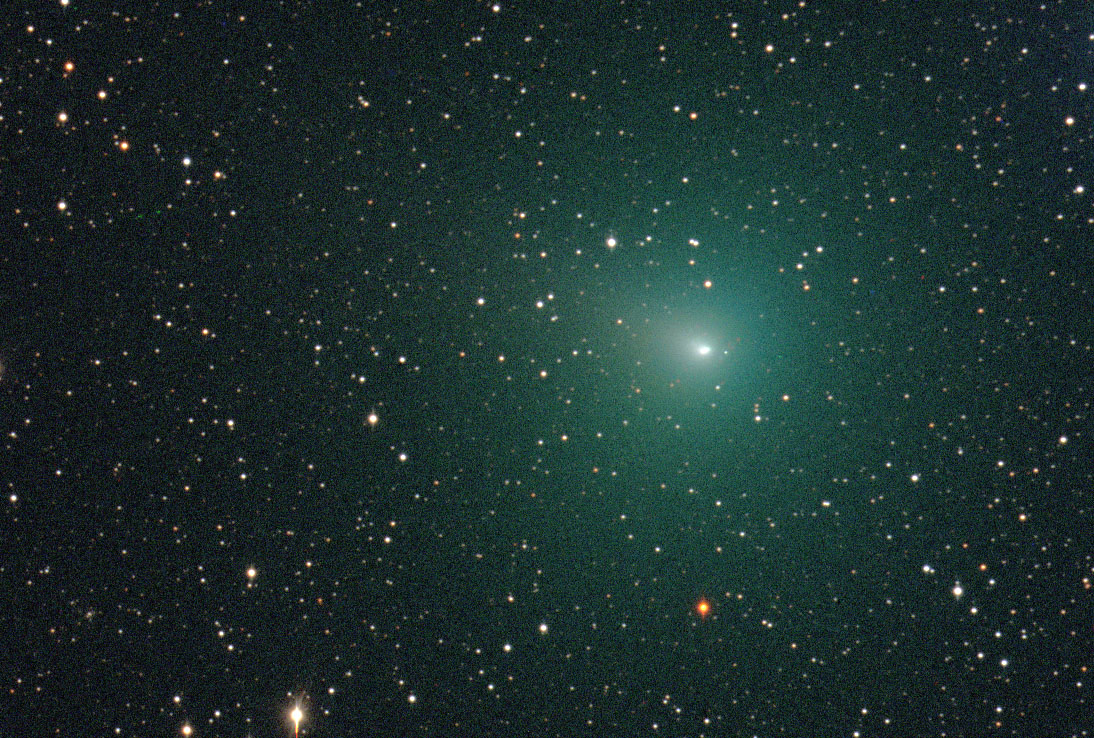
Comet 103P/Hartley 2 shot Octber 15th, 2010
October 16th, 2010
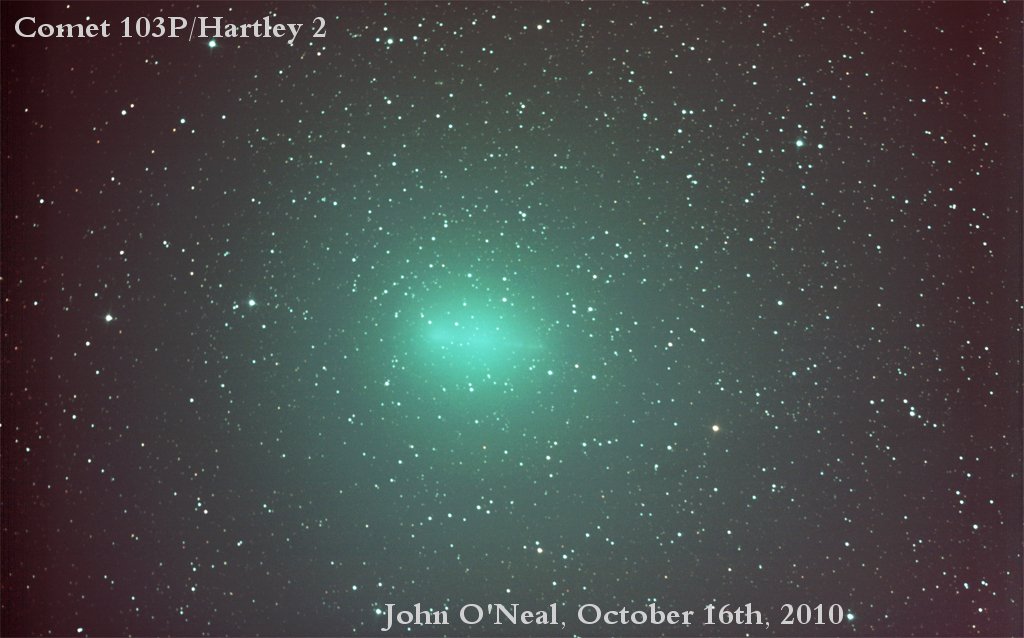
Comet 103P/Hartley 2 with comet trailing
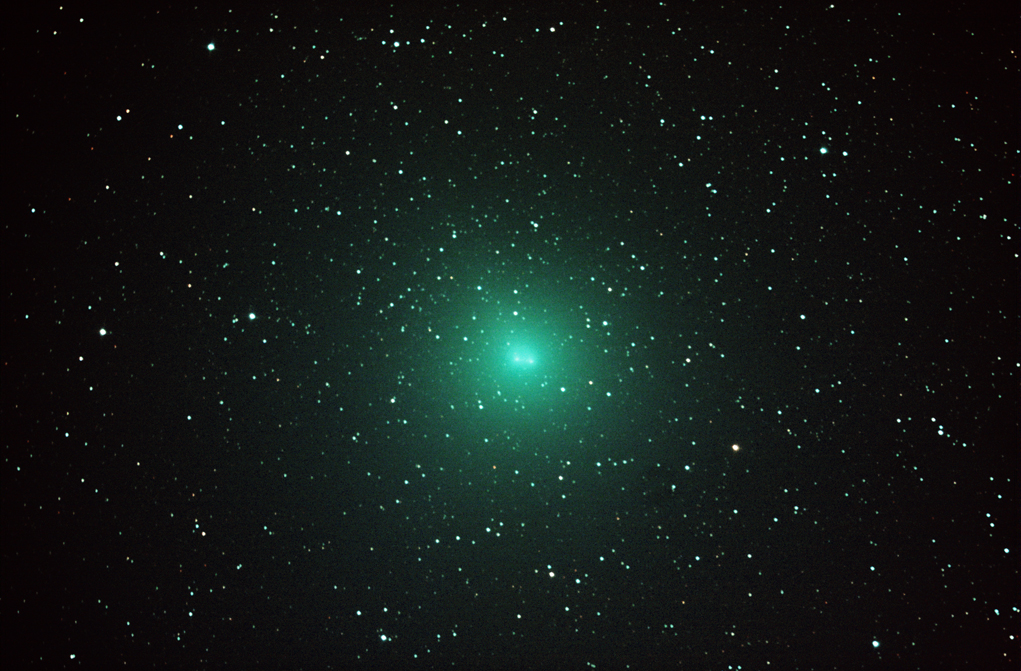
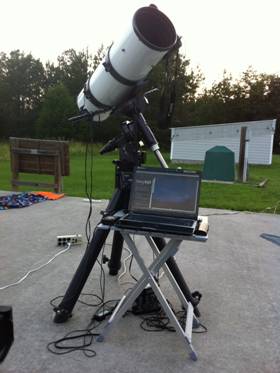
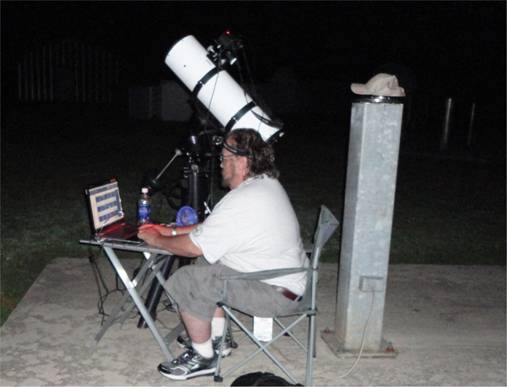
Me and my Comet Hunting Telescope
October 20th, 2010
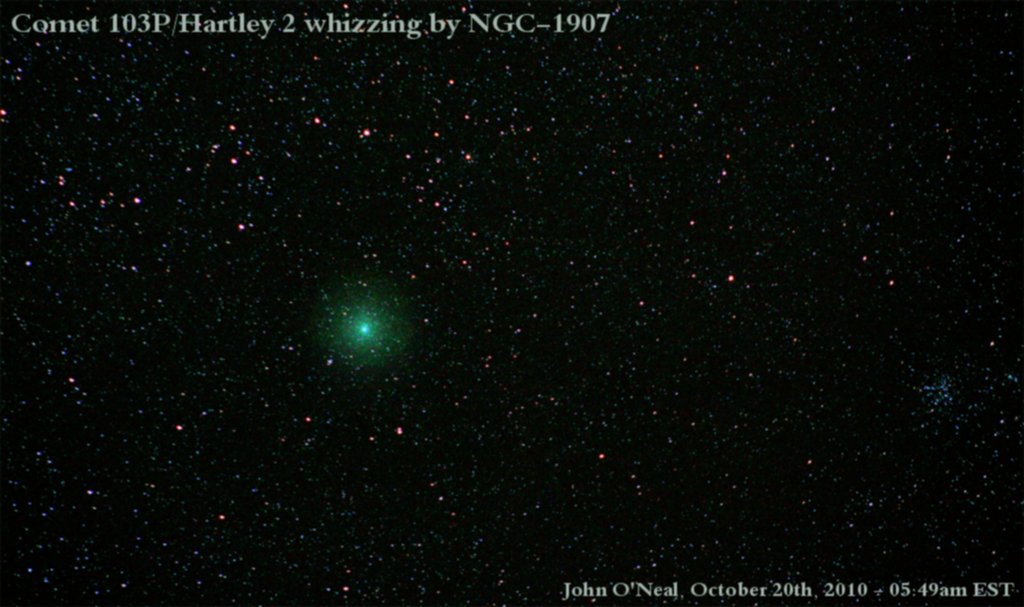
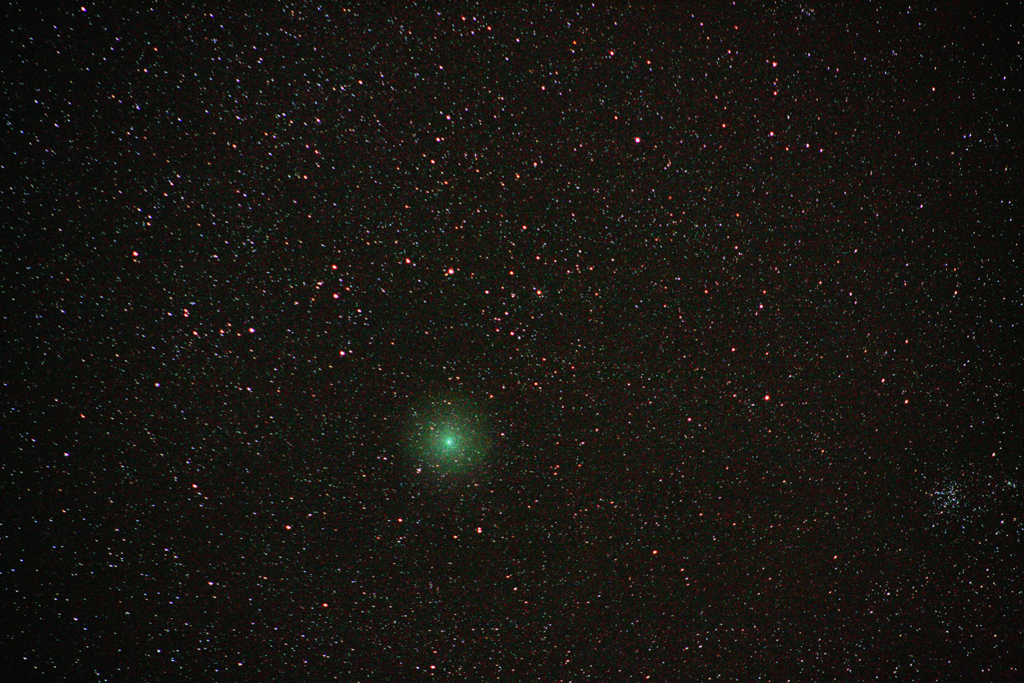
Comet 103P/Hartley 2, M38 and NGC 1907 on October 20th, 2010
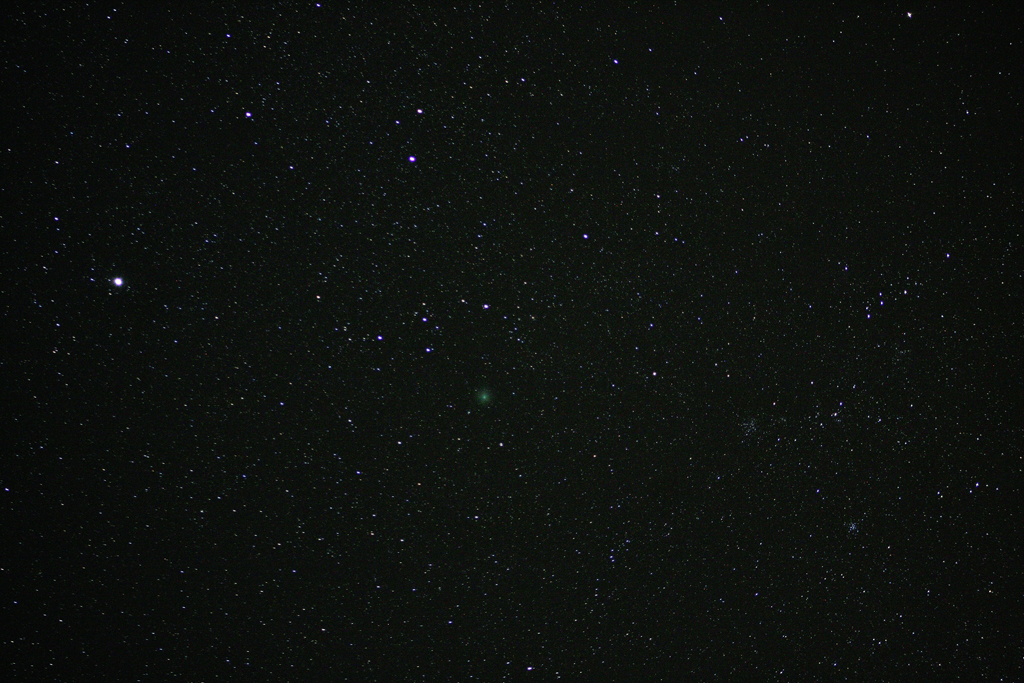
Comet 103P/Hartley 2, M38 and NGC 1907 - with labels shot November 20th, 2010
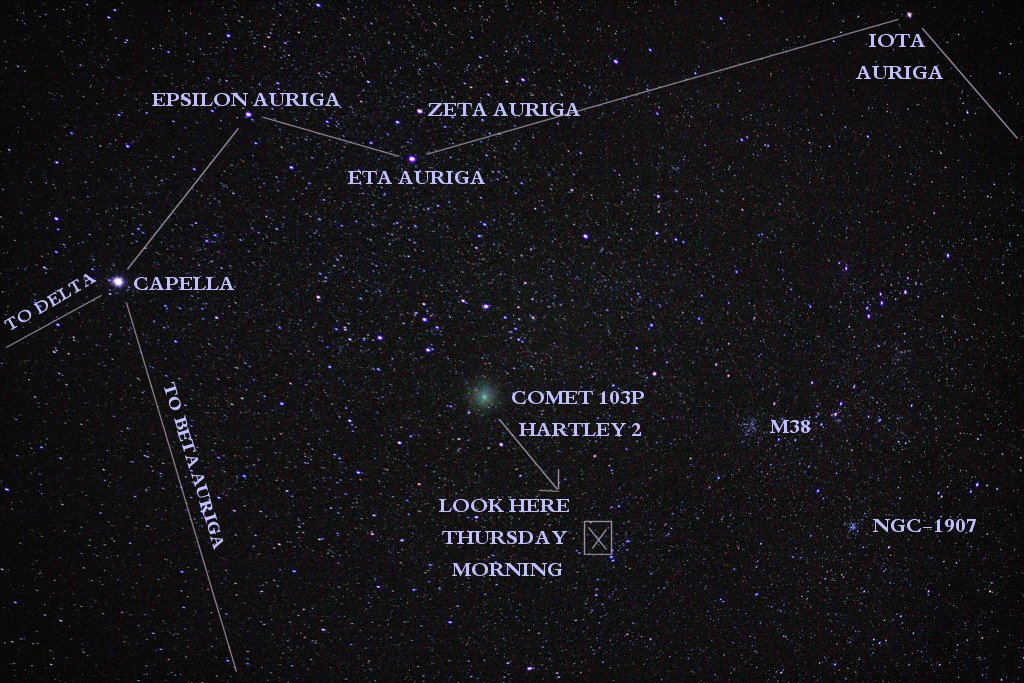
November 13th , 2010

Comet 103P/Hartley 2 shot November 13, 2020 (Wrong date on image)
Comet 103P/Hartley 2 Cropped shot November 13th, 2010
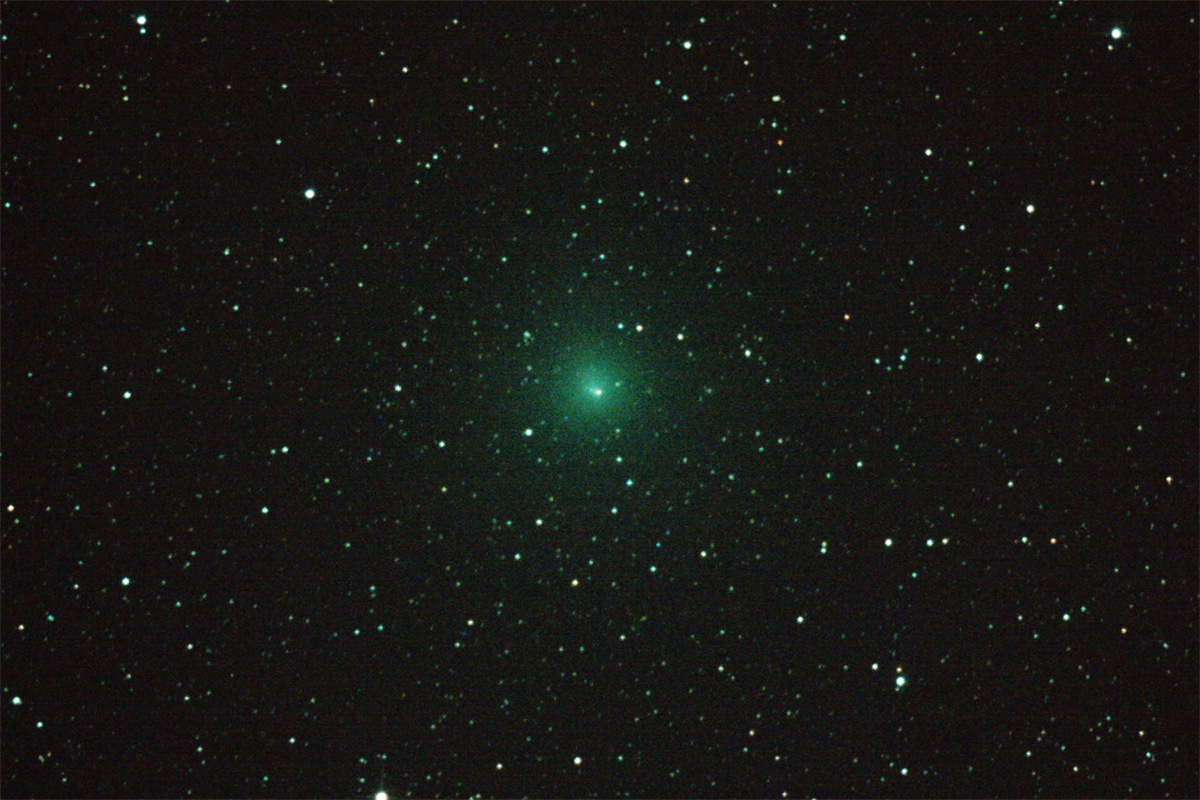
Comet 103P/Hartley 2 with a Taurid Meteor shot November 13th, 2010
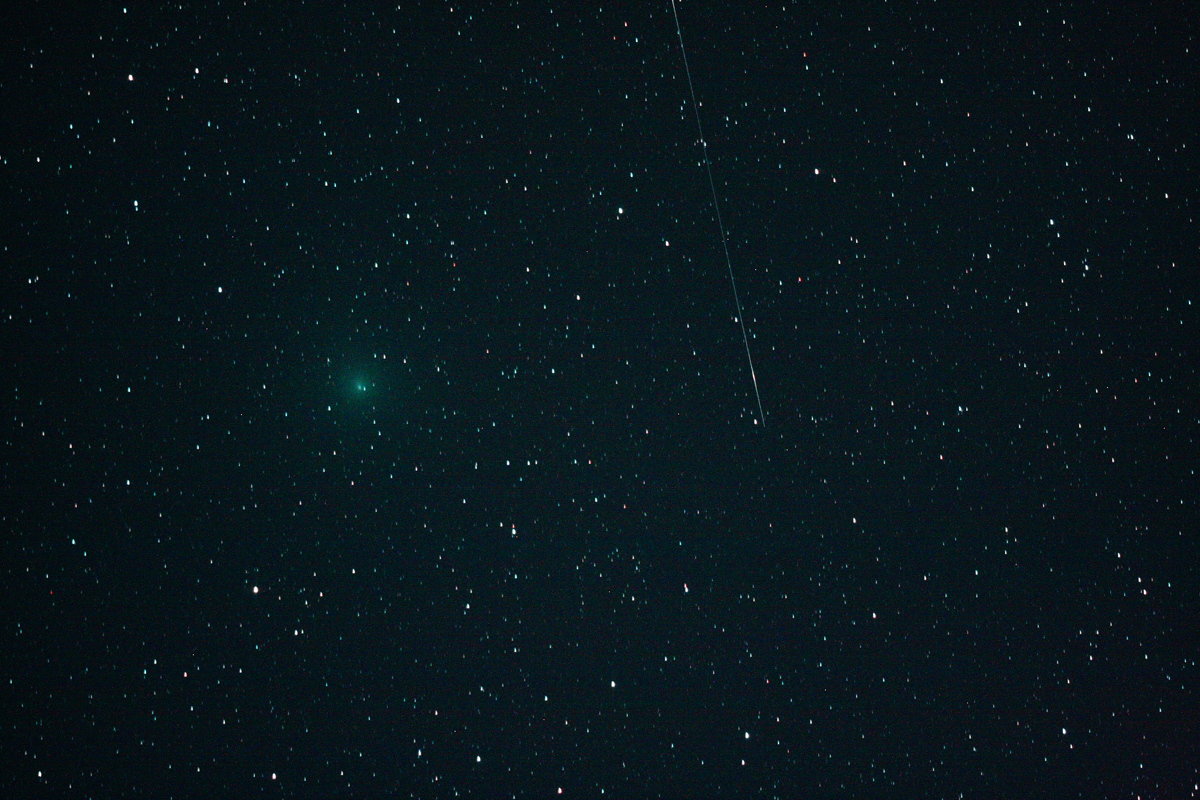
Comet 103P/Hartley 2 with a Taurid Meteor Cropped
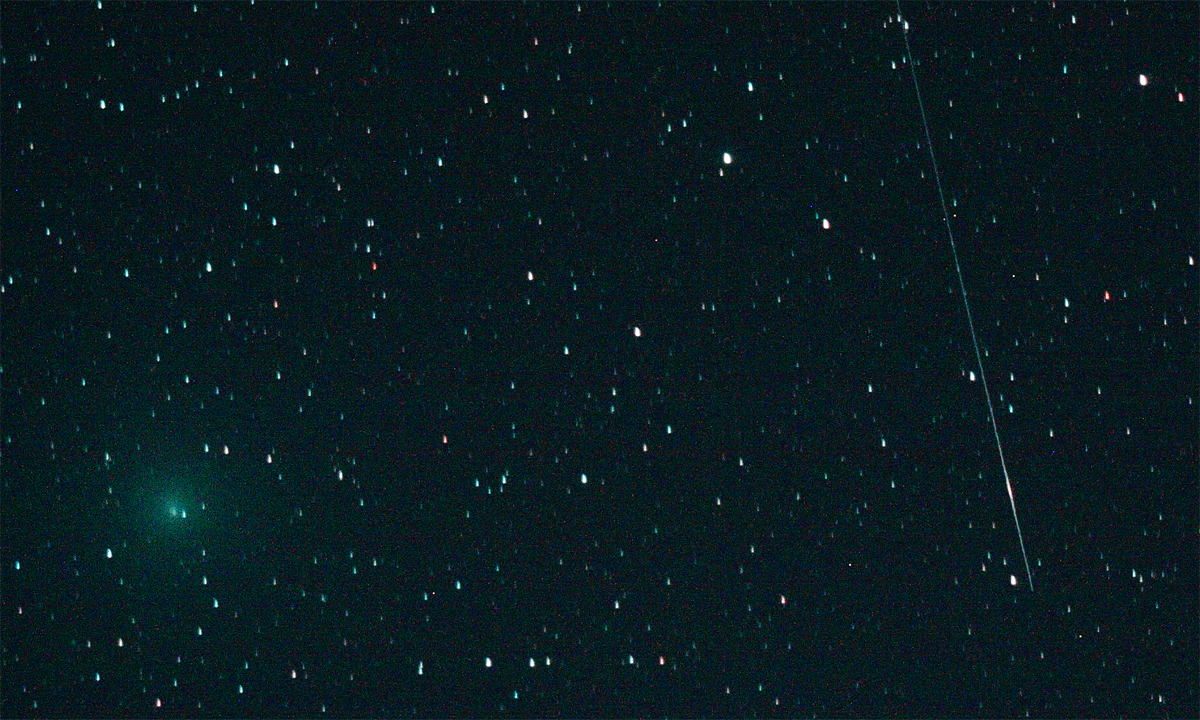
Below are links to watch 6 videos I shot of Comet Hartley 2
Video 1 Video 2 Video 3 Video 4 Video 5 Video 6
Deep Impact flyby
The DEEP IMPACT spacecraft, which had previously photographed Comet Tempel 1,was reused by NASA to study Hartley 2.
The initial plan was for a flyby of Comet Boethin. However, Boethin had not been observed since 1986, and its orbit could not be calculated with sufficient precision to permit a flyby, so NASA re-targeted the spacecraft toward Hartley 2 instead.
The spacecraft came within 435 miles (700 km) while moving at 27,500 miles per hour (44,300 km/h) on 4 November 2010. The data from the flyby were transmitted back to Earth through NASA's Deep Space Network.
The flyby was able to show that the comet is 2.25 kilometers (1.40 mi) long, and "peanut shaped". Some jets of material are being ejected from the dark side of the comet, rather than the sunlit side.
Scientists involved in the EPOXI mission describe the comet as being unusually active, with mission scientist Don Yeomans stating that "It's hyperactive, small and feisty."
NASA's scientists reported that the rays coming off the rough ends consist of hundreds of tons of fluffy ice and dust chunks – the largest particles are of golf ball to basketball-size – and they are ejected by jets of carbon dioxide.
The scientists also said that this is the first time that comet activity powered by sublimation of frozen carbon dioxide is observed as the comet nears the sun; the CO2 ice within the comet must be primordial, dating from the beginnings of the solar system.
